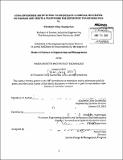Using enterprise architecting to investigate a complex, multilevel enterprise and create a framework for enterprise transformation
Author(s)
Cilley Southerlan, Elizabeth
DownloadFull printable version (15.97Mb)
Other Contributors
Massachusetts Institute of Technology. Engineering Systems Division.
Advisor
Deborah J. Nightingale.
Terms of use
Metadata
Show full item recordAbstract
The Department of Defense (DoD) presented a need to transform its Military Psychological Health Enterprise (MPHE) at multiple levels. It had been established that Enterprise Architecting would be used as an approach to perform the transformation but the way in which the multiple levels of the enterprise would be transformed had yet to be determined. The study began with an investigation into the current state of a low-level component of the MPHE. This investigation invoked Enterprise Architecting techniques to determine the as-is state of this low-level enterprise. Then, the results of the Enterprise Architecting analysis were combined with multilevel analysis techniques to create a framework that supported transformation of a complex, multilevel enterprise. It was determined that upon using Enterprise Architecting techniques to identify the dominant views of a low-level component of a multilevel Enterprise, the structure of the levels the enterprise as well as the interactions between the levels can be used to understand the impacts of decisions made at higher levels of the enterprise. In the specific case of the DoD MPHE, the dominant views were found to be Organization, Process, and Information. By investigating these dominant views in more depth, the ways in which its resources interacted while performing relevant tasks in this micro-level enterprise (Camp Lejeune MPHE) were determined. This information was transformed into objective data, which was then combined with the information about how the levels of the DoD MPHE interact to suggest a framework for modeling potential future states of the enterprise. This will support both the design and selection of a transformation plan for the enterprise. The descriptive application of the suggested framework provided in this thesis supports both the design and selection of a transformation plan for the enterprise.
Description
Thesis (S.M. in Engineering and Management)--Massachusetts Institute of Technology, Engineering Systems Division, 2013. Cataloged from PDF version of thesis. Includes bibliographical references (pages 106-107).
Date issued
2013Department
Massachusetts Institute of Technology. Engineering Systems DivisionPublisher
Massachusetts Institute of Technology
Keywords
Engineering Systems Division.